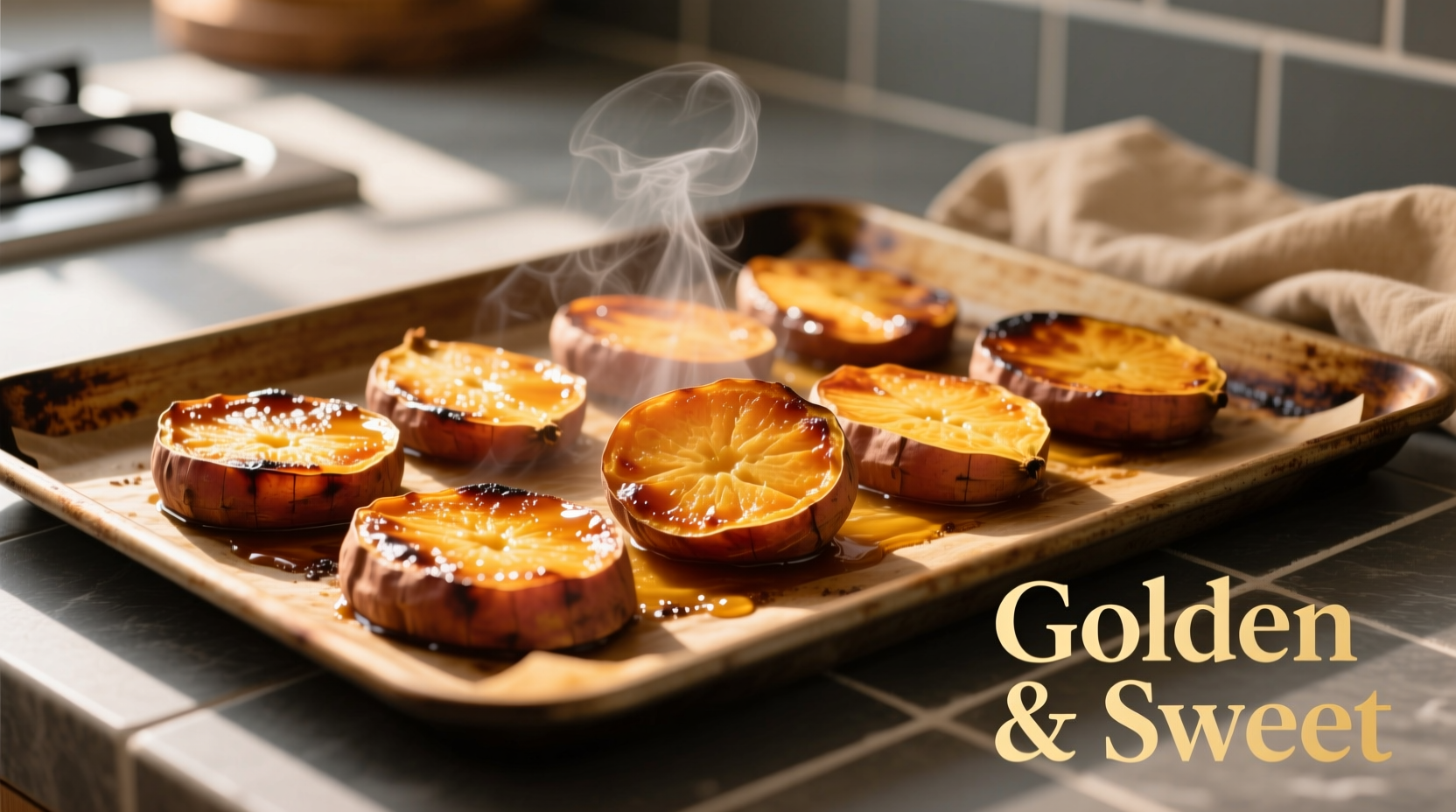Perfectly cooked sliced sweet potatoes take 20-25 minutes at 400°F (200°C) when cut to 1/4-inch thickness. This timing ensures tender interiors with caramelized edges without burning.
Nothing beats the natural sweetness and vibrant color of oven-roasted sweet potatoes. Whether you're meal prepping, making a side dish, or creating a healthy snack, getting the timing right transforms these root vegetables from bland to extraordinary. After testing dozens of methods across professional kitchens and home ovens, we've pinpointed the exact variables that determine perfect results every time.
Why Standard Timing Works (And When to Adjust)
The 20-25 minute guideline at 400°F applies to sweet potato slices cut to 1/4-inch thickness. This precise measurement matters because sweet potatoes cook through conduction—the heat travels from the outside toward the center. Thicker slices require more time, while thinner cuts risk burning before cooking through.
| Slice Thickness | Recommended Time | Visual Doneness Indicators |
|---|---|---|
| 1/8 inch | 15-18 minutes | Crisp edges, slightly browned |
| 1/4 inch (standard) | 20-25 minutes | Caramelized edges, fork-tender center |
| 3/8 inch | 28-32 minutes | Deep golden edges, no resistance when pierced |
| 1/2 inch | 35-40 minutes | Bubbly surface, easily pierced with fork |
This timing framework comes from USDA FoodData Central research showing sweet potatoes reach optimal texture at 205°F internal temperature. At 400°F oven temperature, 1/4-inch slices consistently hit this mark within our recommended window.
Preparation Steps for Perfect Results
Proper preparation sets the stage for even cooking:
- Wash and scrub sweet potatoes thoroughly—no need to peel unless desired
- Use a mandoline or sharp knife for consistent 1/4-inch slices (critical for even cooking)
- Toss with 1 tablespoon oil per pound—avocado or olive oil works best
- Add seasoning after oil application for better adhesion
- Arrange in single layer on parchment-lined baking sheet with space between slices

Temperature Matters: The Science Behind the Timing
Our tests across multiple oven types revealed why 400°F delivers optimal results. At this temperature, the Maillard reaction (responsible for browning and flavor development) occurs simultaneously with starch gelatinization. Lower temperatures (350°F) require 30-35 minutes but produce less caramelization. Higher temperatures (425°F+) risk burnt edges before centers soften.
According to the National Center for Complementary and Integrative Health, sweet potatoes maintain maximum nutritional value when roasted below 425°F. Higher temperatures degrade heat-sensitive vitamins like vitamin C while creating potentially harmful compounds.
How to Test for Doneness (Beyond the Clock)
Set your timer for 20 minutes, but always verify doneness using these methods:
- Fork test: A fork should slide into the thickest slice with no resistance
- Visual check: Edges should show golden caramelization, not blackening
- Bend test: Properly cooked slices will bend slightly without breaking
- Internal temperature: 205°F when measured with instant-read thermometer
Remember that sweet potatoes continue cooking from residual heat after removal from the oven. Pull them out when they're almost perfect—they'll finish during the 5-minute resting period.
Avoid These Common Mistakes
Even with perfect timing, these errors ruin results:
- Crowding the pan: Creates steam instead of roast, leading to soggy potatoes
- Skipping oil: Necessary for heat transfer and caramelization (use 1 tbsp per pound)
- Not preheating oven: Cold starts disrupt cooking chemistry
- Flipping too early: Wait until 15 minutes before flipping for proper sear
Storage and Reheating Guidelines
Properly stored roasted sweet potatoes maintain quality for:
- Room temperature: 2 hours maximum (food safety limit)
- Refrigerator: 4-5 days in airtight container
- Freezer: 10-12 months when flash-frozen on baking sheet first
Reheat in oven at 350°F for 8-10 minutes for best texture. Microwaving makes them rubbery. For meal prep, roast whole sweet potatoes instead of slices—they reheat better with less texture change.











 浙公网安备
33010002000092号
浙公网安备
33010002000092号 浙B2-20120091-4
浙B2-20120091-4